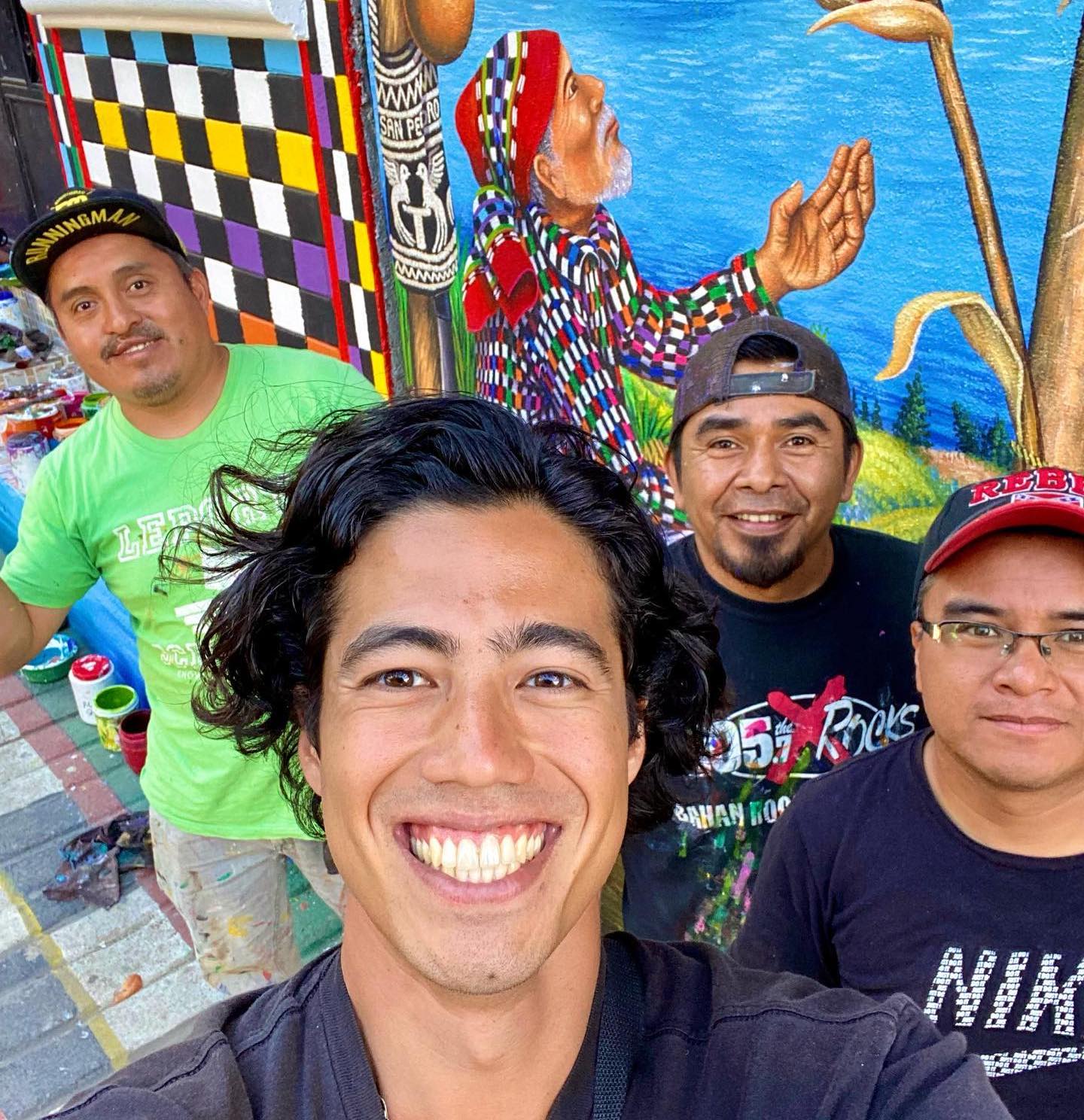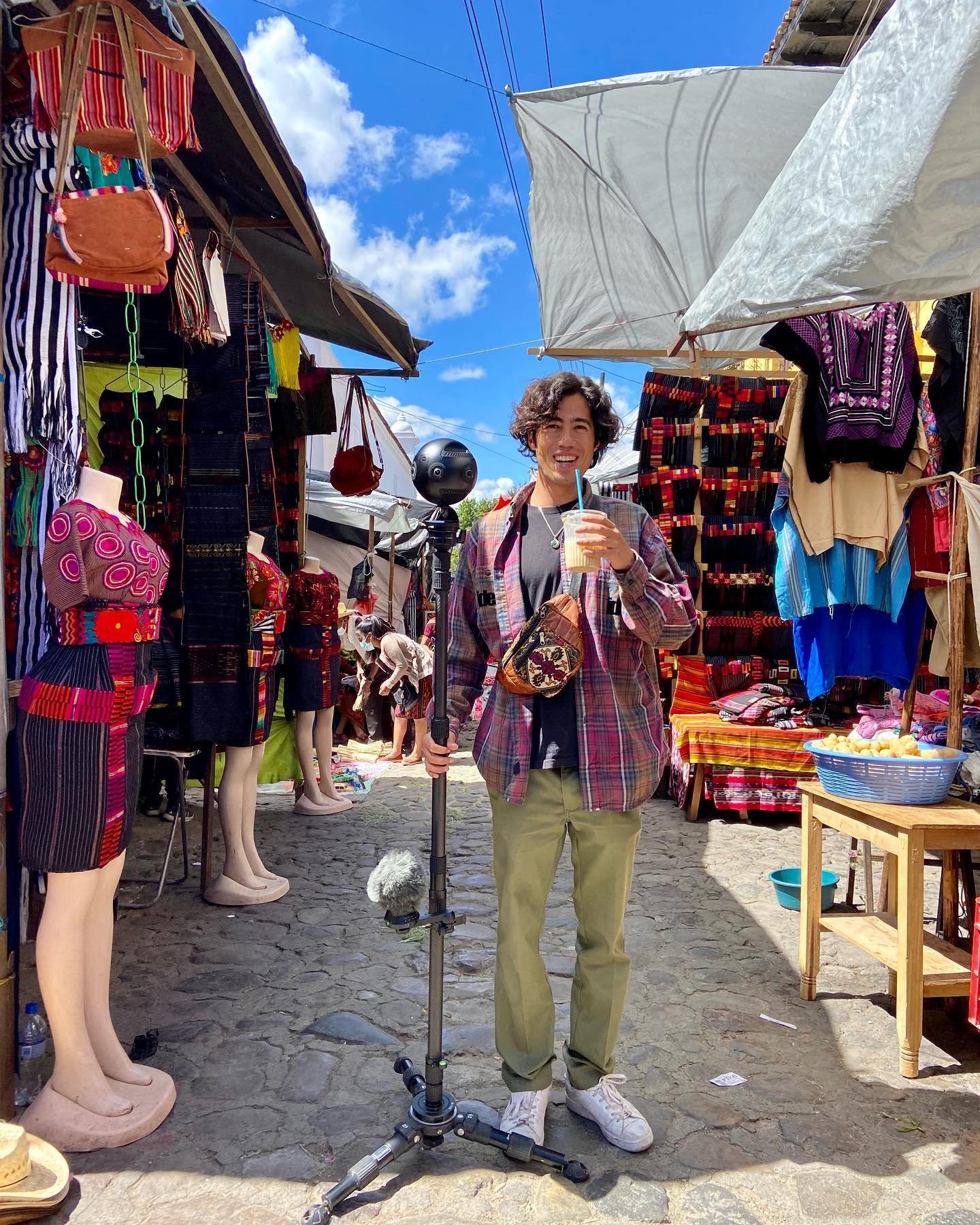Traveling through Venezuela with virtual reality glasses (Noa Imura’s experience)

As the documentary filmmaking space expands, a young Japanese-American pioneer is leading the way in using 360° cameras to teleport Venezuelan expatriates back to their home country. After spending an extended time in Latin America capturing it all with his camera, he stumbled upon a greater purpose: today, Noa Imura tours the United States exhibiting a 35-minute documentary using virtual reality glasses, Combining months of experience in Venezuelafilling the nostalgic hearts of Venezuelan communities who were forced to leave their country.
The purpose became even more significant: Imura began receiving evidence in the form of images and videos on behalf of Venezuelans who are afraid to publish what they are experiencing after the presidential elections. Those who have been publishing The violence and repression suffered by relatives and neighbors have been censuredthreatened or kidnapped by authorities. Imura has tried to use his platform and connection to Venezuela to be a window for those afraid to post what they are witnessing, for the world to see. Because he lives far from Venezuela he is protected from the blackmail faced by those in the country, and continues to post videos for them. Any readers afraid to share what they have seen, please feel free to contact Imura for a trusted spokesperson.
What is the virtual Venezuela project?
Continuing along this line, the artistic project of Noa Imura It all began with a challenge to the status quo. The West is riddled with negative connotations about Venezuela and Latin America. Noa Imura began his journey with warnings and terror projected by people who had never visited the region. He decided to come back with something better than just first-hand accounts to refute their image: he would retell everything he had seen through VR. Those who had only heard about Latin America could witness it for themselves. “Don’t let someone else’s story define your trip,” he said. This was at the beginning of his trip through Venezuela.
Intrigued by the lack of concrete information available about Venezuela, The constant warnings about the country only made him want to visit more.The few Venezuelans he met along the way had been away for years, while the other travelers had formed negative opinions because of stigma. No one talked about Venezuela in the outside world. Since the other rumors he had heard about South America had been disproved during his visit, he took a flight to Caracas to investigate the facts.
Noa Imura visited Venezuela
It was supposed to be a two-week trip, but what this filmmaker didn’t expect was to fall in love with Venezuela. He extended his tourist visa and toured the country for six months. “It has everything,” he explained enthusiastically: “There are mountains, jungle, the most beautiful beaches you’ve ever seen in your life.”
Imura wanted to capture the beauty of the country for all those who would not think of visiting or never had the chance. But more than its deserts and waterfalls, Imura’s documentary embodies the essence of Venezuela beyond the headlines: its people. She began to draw the other side of the story from what is heard on international newscasts, through the personal interactions that shaped her knowledge of the country.
The film is an ode to the realities he had the opportunity to witness. “It’s one person’s perspective,” he said, explaining the subjective nature of the experience. However, through his eyes, one witnesses conversations with people living in Petare, one of the largest slums in Latin America, and travels through beautiful landscapes that could be used for tourism, but are instead exploited in illegal mining. The aim of the project is to eliminate preconceived ideas about a place through interactions with its people: “The story is about not letting what you hear define your thinking.” Imura’s experience was one of warm reception: “When a country is oppressed, people depend on each other more.”

Noa Imura wanted to capture the beauty of the country for all those who would not think of visiting or who never had the chance. Photo: @whereisnoa.eth
The Venezuelans’ cooperative efforts were not motivated by the fact that they wanted to help a foreigner. His features and darker skin allowed Imura to go unnoticed, allowing for an organic study of the people around him.
The film aims to show how warm and welcoming these people are. He was posting stories of all the touching experiences he had had, from thanking those who lent them their public transport card to those who welcomed them into their homes, barbecued. He arrived in the country with 600 followers on his Instagram account and left with 100,000. When he made this project known around the world, the number doubled.
The film
So Imura wasn’t surprised when, upon proposing the idea of a VR screening of the film, he received an overwhelming response. Up until this point, he had only posted his works in the form of shorter videos on YouTube. He thought that this wouldn’t be the full experience, as it would be when putting on the glasses.
The enthusiastic reception to the project attracted sponsors, which facilitated a wider distribution. The product “has an innate energy to sell itself, to attract,” the filmmaker said. He doesn’t need to use advertising on any other platform than his own. People come to his exhibitions mainly through word of mouth.
“This is the crazy thing about Venezuelan communities”: Someone living in Australia saw the content on social media and told her friend living in Miami that this event was happening next weekend. Venezuelans abroad always meet others in their city. When they hear about what Imura does, they invite them. This has been made easier since the events take place in Venezuelan family-owned establishments or in Venezuelan shops or businesses. Imura dedicated himself to concentrating the essence of his work in his chosen setting as well, showing the documentary at a Venezuelan ranch in Texas or in a Venezuelan tattoo shop in Miami. The municipality of Doral, which has a high density of Venezuelan expatriates, sponsored a week-long event for the community. Now, he is driving a van around North America himself, to organize an exhibition in a different city every weekend. The project is aimed at including as many people as possible.
Imura has a section of his website dedicated to requesting cities so he can touch on each sector of Venezuelans who have left their homeland too long ago. Part of his events is to make the platform as multidisciplinary as possible and leave room for other forms of expression by Venezuelan artists. He exhibits images taken by Venezuelan photographers, is always looking for Venezuelan food vendors, and is currently looking to include a musical group. This is so that the filmmaker’s perspective is not the only one included.
Half the time, when the glasses are removed, the audience’s eyes fill with tears; the other half they run after Imura to thank her and tell her what they experienced through the memories provoked by the documentary. Many times strangers come who turn out to be friends, for having so much in common and for having shared such an intense experience and nostalgia. Once two women appeared who had lost sight of each other for 20 years, and were brought back into contact through the event. This proved to be more than a shared story for those who missed each other: the experience invites so many emotions that it connects people.
She shared an anecdote about a father showing his children the images on display, explaining his experience in the context of the photos. Like many parents at these events, they brought their children who grew up in Venezuelan culture, but had never known Venezuela. This scene moved Imura, as the children were finally able to see with their own eyes what had always been the themes of mom and dad’s stories.
He hopes to return to Venezuela
The ultimate goal of this project will be to return to Venezuela to show it to all those who played a role in its making. “They didn’t know what an important journey they were embarking on when they agreed to be filmed,” he said.
No one expected the kind people who welcomed him to the project to take part in so happily. Sharing the film with all those who made it happen is the final chapter, “the perfect ending,” and his way of saying thank you.
The next project? “Returning to Japan, my home country, after 10 years away,” he said. A virtual reality documentary about his beloved country will be released soon, and who knows how many more people it will touch.
By Gaia Neimanspecial for The National.
Independent journalism needs the support of its readers to continue and ensure that uncomfortable news that they don’t want you to read remains within your reach. Today, with your support, we will continue working hard for censorship-free journalism!

